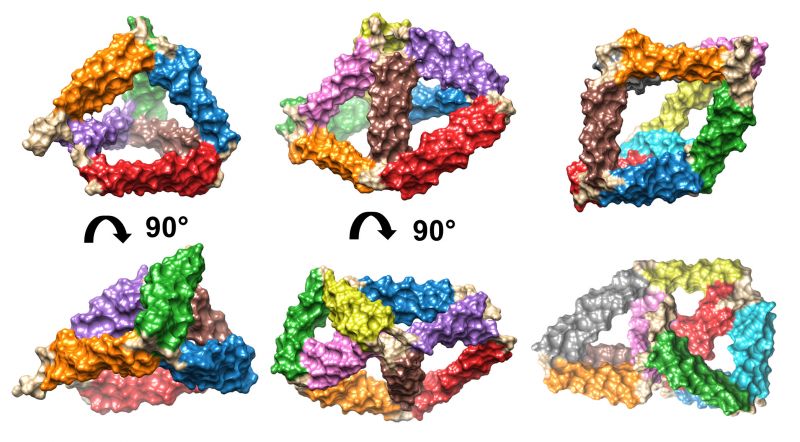
Caracterización estructural de jaulas proteicas de ‘origami’ utilizando microscopía electrónica.
Roberto Melero, CNB-CSIC
Scientists at the Centro Nacional de Biotecnología of the CSIC (CNB-CSIC), together with institutions from all over Europe, have used a new computational design method to build nanometric protein cages as if they were figures created with origami. The proteins are able to self-assemble in an aqueous solution, as well as inside bacteria, animal cells, and even in live mice.
The study, published today in the journal Nature Biotechnology, highlights the fact that these small cages could be used as delivery vehicles for drugs, vaccines, or molecular nanomachines.
"We confirmed that our protein cages are correctly folded inside live mice, and cause no inflammation or any pathological effect," explains co-author Roberto Melero, a CNB-CSIC researcher. “This makes them very valuable, versatile candidates for the development of new therapeutic strategies."
According to the authors, the last decade has seen intensive work on the construction of molecular structures with DNA. In this paper, the scientists translated this idea to proteins, a more versatile material that can be used as modular building blocks. The result was a tetrahedron cage –a pyramid with four sides and triangular prisms. "We use computational tools to design polypeptides that we then used as building blocks. Each of our origami cages is composed of over 700 correctly folded amino acids," explains Melero.
The Spanish team that participated in this research is led by scientist José María Carazo, director of the Spanish INSTRUCT Centre —INSTRUCT is the European Structural Biology infrastructure—, whose Scientific Advisory Committee includes this year's Nobel laureate in chemistry, Professor Joachim Frank..
- Fuente CSIC
- Ajasja Ljubetic, Fabio Lapenta, Helena Gradišar, Igor Drobnak, Jana Aupic, Žiga Strmšek, Duško Lainšcek, Iva Hafner-Bratkovic, Andreja Majerle, Nuša Krivec, Mojca Bencina, Tomaž Pisanski, Tanja Ćirković Velicković, Adam Round, José María Carazo, Roberto Melero & Roman Jerala. Design of coiled-coil protein-origami cages that self-assemble in vitro and in vivo.. Nature Biotechnology. DOI: 10.1038/nbt.3994


